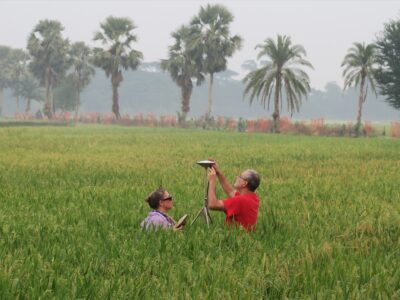
Even the most skilled of English language lipreaders are only able to tease apart about 30 percent of the information being shared. I learned this reading a recent article (Kolb, 20131). The author, herself deaf, went on to note that in some transmissions the information capture is higher while in others there is nothing collected. An average of 30 percent information transfer…most of us seek more information, we are curious beings. I don’t know anyone who is happy to sit comfortably saying “yes we know 30 percent, that is good enough.”

I am surrounded by question posers, information seekers, hypothesis formers – scientists are an inquisitive bunch for sure – and that is how we find ourselves back in Greenland in July seeking to learn more about the information operating underneath and deep inside this changing ice sheet, and testing just what our IcePod instruments are capable of telling us. Thirty percent is well in excess of what we currently know about ice sheets and their processes, but every line flown and piece of data collected and analyzed builds upon our current understanding.

Prior to arriving at the base for the morning, flight plans were laid well in advance. Discussions threaded through the series of meetings leading up to our return to Kangerlssuaq, piecing together the right combination of flights that would focus on testing instruments and addressing the science. Instrument range, elevation, seasonal snow conditions, old radar lines all are factored in. Once in Greenland we must weave weather and instrument issues into our planning. Weather is cloudy and reports suggest an improvement during the week, so we will shelve our camera testing for the minute and focus on instruments designed to penetrate through the clouds. Today our flight will focus on tuning our Deep Ice Radar System (DICE).

Located at the crest of the ice sheet the elevation is just over 10,500 ft. and seems just the place to test our deep ice radar. Once aloft, we head for deep ice up over Summit. The weather reports are validated – the whole area is socked in with cloud cover and the pilots switch to Instrument Flight Rules (IFR). Our survey flight at Summit is 3,000 ft. above ground level (agl), but the aircraft instruments tell us we are 13,000 ft. above sea level (asl). The ice is deep and DICE is the focus of the next few hours as we survey and resurvey in the same area with dialogue, testing, refining and learning with each pass.

A question was raised — would we want to move to a second area to look at different conditions? Checking other areas of the ice sheet is tempting, but the science team vetoes this…”We learn more by doing this now,” holding our focus on one location. So we refocused our efforts, collecting more data, making more small adjustments, and consider that with each data point we are improving our lipreading of the ice sheet.

For more about IcePod: http://www.ldeo.columbia.edu/icepod.
1Kolb, Rachel, Seeing at the speed of sound, in Standford Magazine, March/April 2013 http://alumni.stanford.edu/get/page/magazine/article/?article_id=59977



